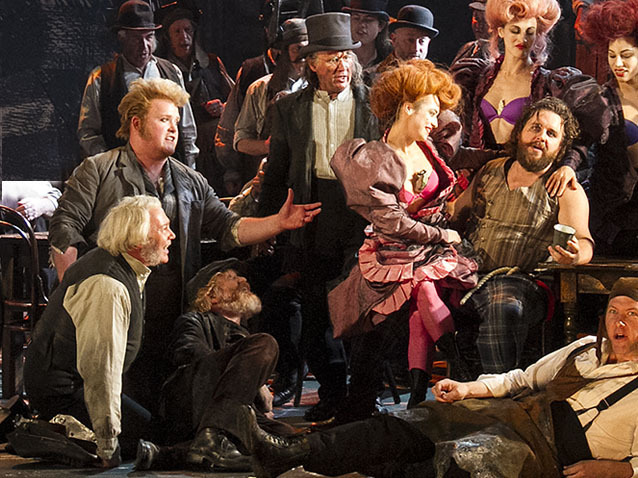 © DR
© DR
Three artists who integrated the “excess” in their art or in their lives, together with the renaissance goldsmith and sculptor Benvenuto Cellini, providing the character and the subject, the composer Hector Berlioz bringing the music, and Terry Gilliam, film and stage director, on the staging are the parents of the spectacular and captivating production that is taking place at Liceu and which most probably will be the big event of the season.
The vigorous start with a colourful troupe of jugglers, acrobats and other extravagant characters invading the stalls evoked the debauchery of a roman carnival. This Benvenuto Cellini, set in the 19th century rather than in the original 17th century, is a non-stop of powerful visual images bringing together diverse referents, ranging from Piranesi’s engravings – especially his Imaginary Prisons (Le carceri d’invenzione) – to the oneiric vision of Rome and the Vatican institution by Federico Fellini, another great and “excessive” artist himself.
The stage is always filled, even when fewer characters might be needed, but Gilliam, who sometimes seems to be affected by a dramatic horror vacui, moves them with skill and reaches a pyrotechnic and delirious carnival scene, an authentic explosion of theatre and resource exhibition.
This Benvenuto Cellini, almost consumed by the sumptuous stage direction, obtained a truly notable musical result. Firstly, I need to outline the fine work of maestro Josep Pons with the orchestra, which sounded magnificent and appropriate in tempi and dynamics. The choir, especially the men sections, featured brilliantly as well, and only momentarily fell apart in the carnival scene, due to the frenzy circulation imposed by the stage direction.
Amongst the soloists, I would like to highlight John Osborn, debuting at Liceu. The North American tenor, whose voice was not of extraordinary beauty but was certainly very well used, sang the main role with taste and style mastery. He attacked the higher notes (numerous and risky) with great easiness, perfectly covering the sound throughout and projecting efficiently the emission. Kathryn Lewek, debuting at Liceu as well, also offered a very good performance in the role of Teresa, Cellini’s beloved, singing with a graceful sense of legato and adjusting perfectly in the complex concertanti passages and in the duo with Ascanio. This latter role, in travesti, of Cellini’s friend, was greatly delivered as well by the mezzosoprano Annalisa Stroppa, who in the aria “Mais qu'ai-je donc!” stirred up a warm applause in the audience.
The veteran Eric Halfvarson, started with a somehow unrounded voice but by the end he provided the weight, gravity and solemnity required for the character of Pope Clement VII, which was presented in the fashion of Altoum, the Chinese emperor from Turandot, without much dramatic justification (another extravagance by Gilliam).
Maurizio Muraro and Ashley Holland were sufficient in the negative roles of Balducci, Teresa’s father, and Fieramosca, Cellini’s professional and sentimental rival. The remaining secondary characters were all up to a good Standard
Xavier Pujol
***
Benvenuto Cellini by Hector Berlioz. John Osborn, tenor.Kathryn Lewek, soprano.Maurizio Muraro, bass. Ashley Holland, baritone.Eric Halfvarson, bass.Francisco Vas, tenor.Valeriano Lanchas, tenor. Manel Esteve, baritone.Antoni Comas, tenor.Annalisa Stroppa, mezzosoprano.Orquestra Simfònica of Gran Teatre del Liceu. Choir of Gran Teatre del Liceu. Josep Pons, conductor. Terry Gilliam, stage director. Coproduction by English National Opera, Dutch National Opera & Ballet (Amsterdam) and Teatro dell'Opera di Roma. Gran Teatre del Liceu. Barcelona, 14th November 2015.
the 19 of November, 2015 | Print
Comments